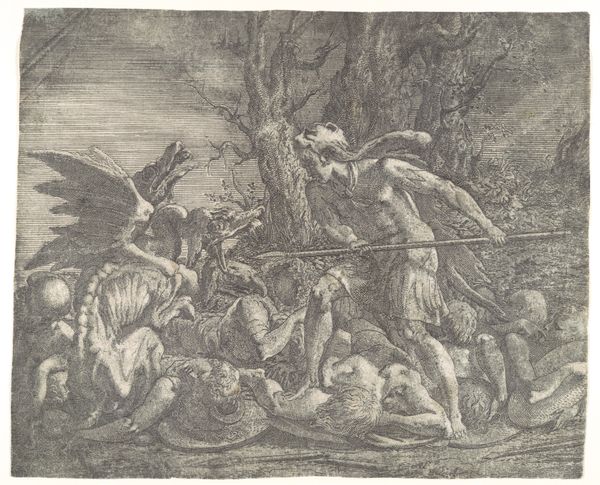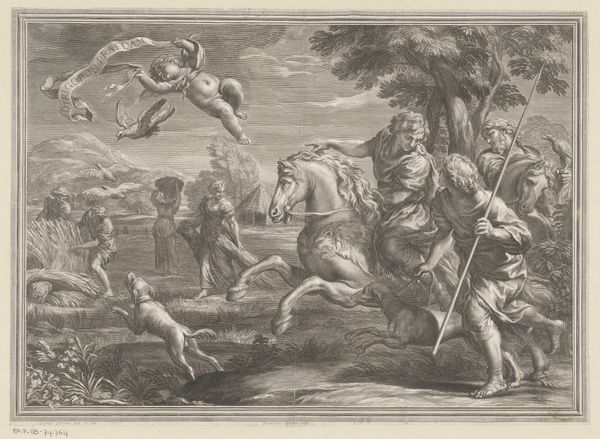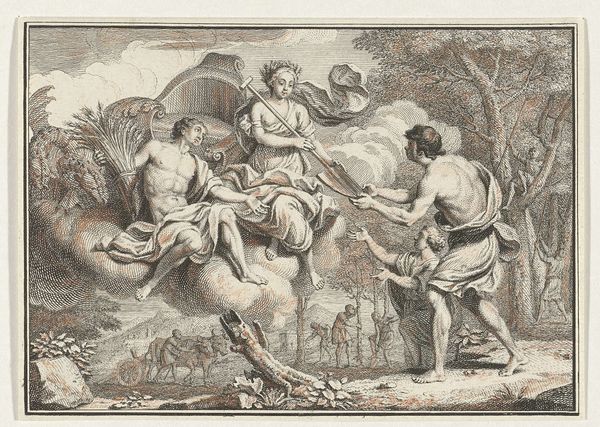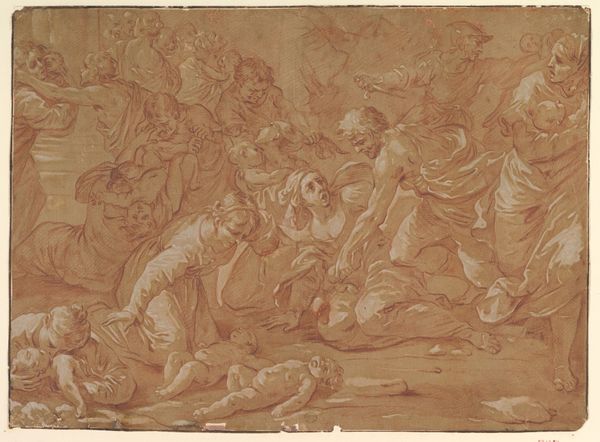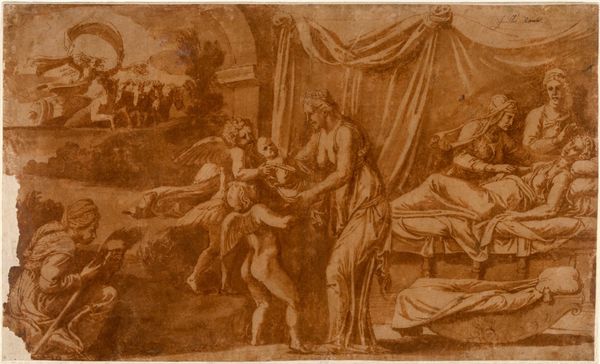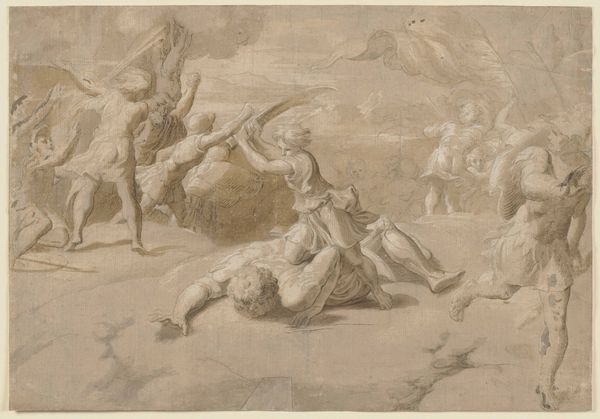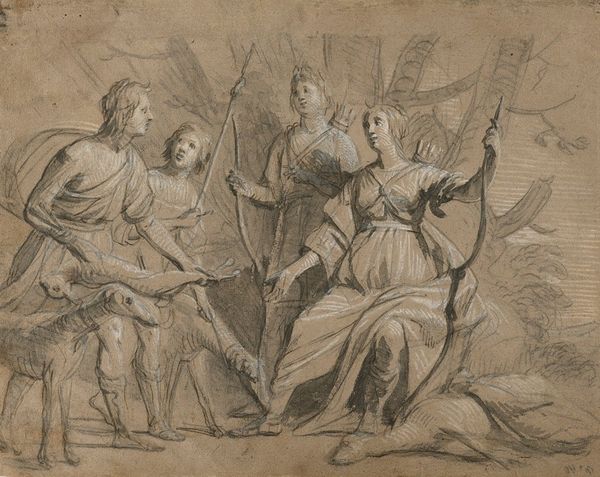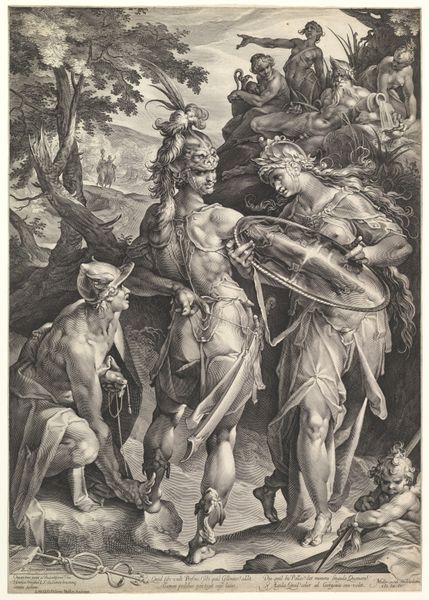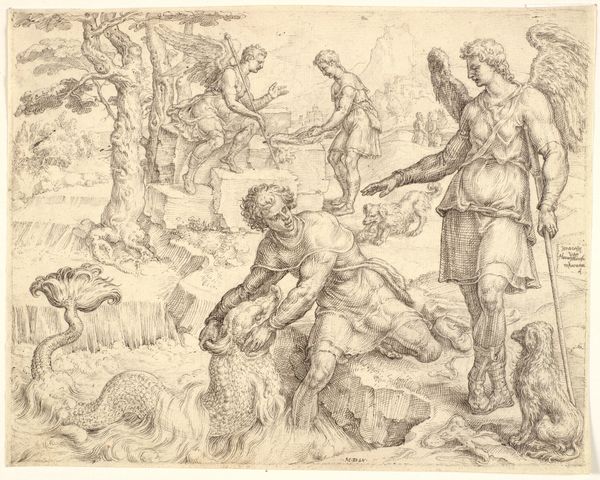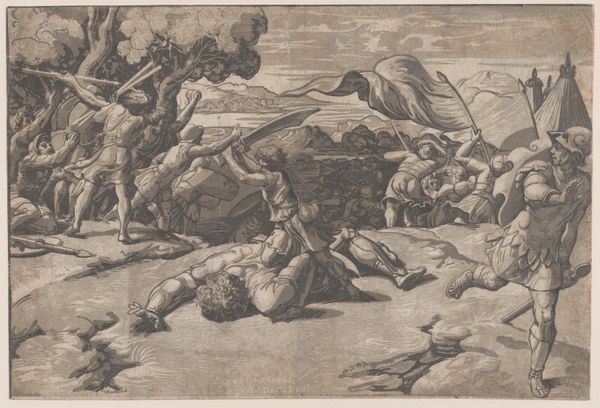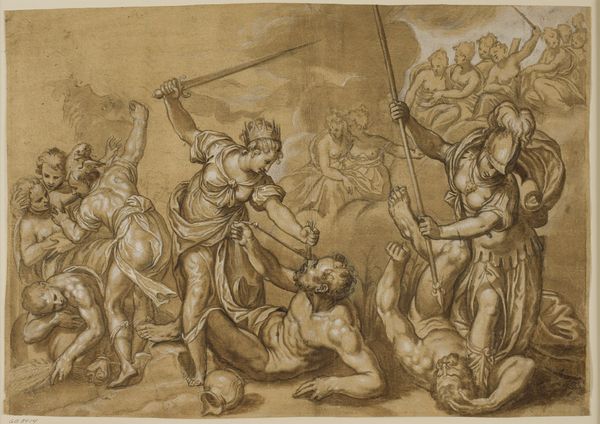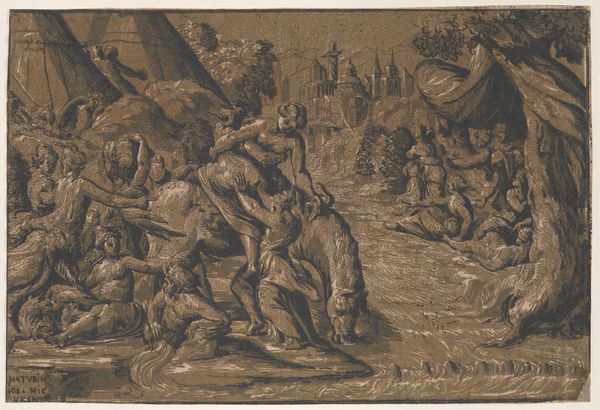
Diana verjaagt Cupido en zijn helpers die haar probeerden te strikken 1566 - 1629
0:00
0:00
painting, oil-paint
#
allegory
#
baroque
#
painting
#
oil-paint
#
landscape
#
figuration
#
oil painting
#
genre-painting
Dimensions: height 219 mm, width 368 mm
Copyright: Rijks Museum: Open Domain
Curator: Up next we have "Diana verjaagt Cupido en zijn helpers die haar probeerden te strikken," which translates to Diana chasing Cupid and his helpers who tried to ensnare her, an oil painting by Otto van Veen dating somewhere between 1566 and 1629. What is your first take on it? Editor: Chaotic. There's a real sense of turmoil here, even within this subdued color palette. It feels like I've walked into the middle of some ancient playground spat turned epic battle. A real clash of innocence and intent. Curator: Van Veen has captured quite a theatrical moment, hasn’t he? Diana, the goddess of the hunt, is in full pursuit, bow in hand and flanked by her dogs and nymphs, while a gaggle of terrified cupids scramble to escape. There's almost something comical about it. It highlights the contrast between the chaste Diana and Cupid, the mischievous god of love. Editor: The landscape style, almost pastoral in the backdrop, juxtaposes wonderfully with the almost violent scene in the foreground. I wonder, in its original context, if it was trying to explore that struggle between natural beauty and raw emotion, between untamed wilderness and Cupid's more manipulative game. Or, was this just good fun for a patron? Curator: I would wager that the target was the patrons' delight and their reflection on allegory. Allegorical pieces like these allowed artists to impart complex moral or philosophical lessons under the guise of an entertaining narrative. Diana, in her resistance to Cupid, becomes a symbol of chastity and reason triumphing over lust and desire. Remember, the role of imagery at that time, specifically within powerful households, served specific, didactic purposes. Editor: Right, like visual sermons cleverly disguised as mythological capers! Looking at the brushwork, particularly in the fleeing cupids, you get this incredible sense of frantic, fleshy vulnerability. Van Veen really knew how to capture the awkwardness of naked cherubs in full-blown panic. It’s rather telling, though, how we, as observers, shape those roles of interpretation as well. I imagine the artist just chuckled, painted and shrugged. Curator: Precisely! Art gains renewed meaning as contexts evolve and new eyes engage with it. Anyway, that is the interesting nature of this particular canvas—its charm relies heavily on this contrast. I am very grateful we can revisit the beauty that past and present brings. Editor: Agreed. Art endures, thankfully! A conversation through centuries, right here on a museum wall. Always thought provoking.
Comments
No comments
Be the first to comment and join the conversation on the ultimate creative platform.
